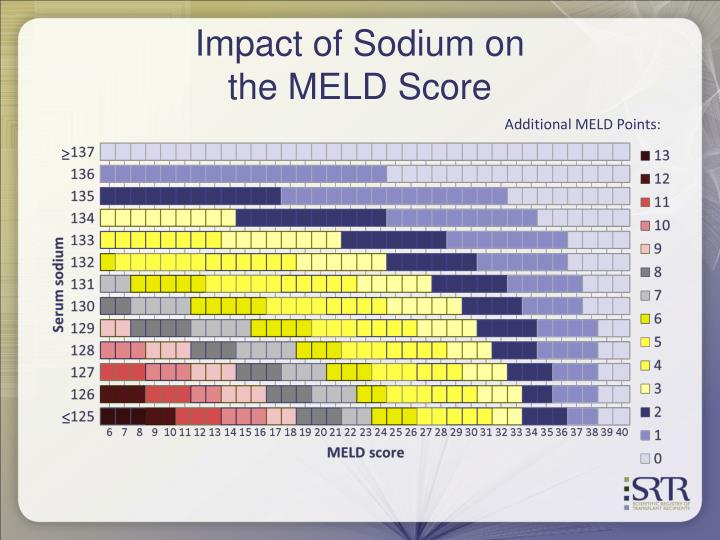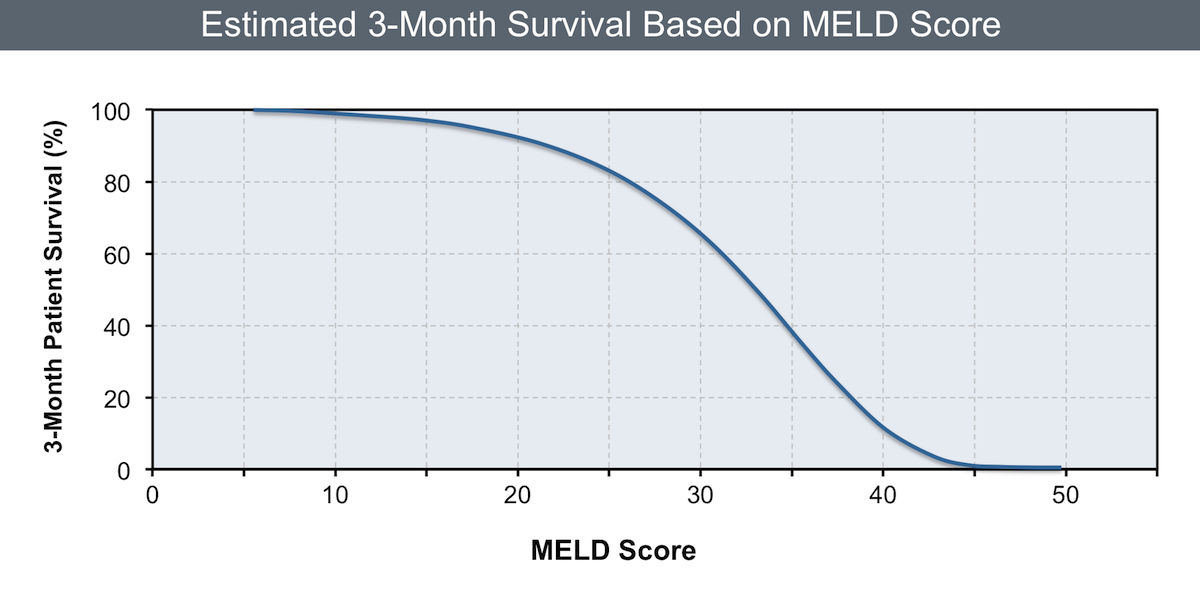

The PELD score is used for patients younger than 12 years of age. Multiply the score by 10 and round to the nearest whole number.

Patients with acute liver failure are given a distinction called "status 1," which supersedes MELD scores in terms of transplantation prioritization. Its calculation was based on serum bilirubin, serum creatinine, international normalized ratio (INR) and etiology of liver disease. Use of the MELD score to prioritize transplants has lead to a decreased rate of pretransplant death for those on the waiting list, but use of the score causes some controversy because it does not indicate survival benefit of transplantation. >15: may benefit from liver transplantationĬertain clinical situations lead to automatic increases in the MELD score in an attempt to increase or decrease waiting times on a liver transplant waiting list:.Scores are used to prioritize liver transplantation: Anyone with a serious liver disease should understand what a MELD score is and how doctors arrive at. MELD score of 25 or greater: Every 7 days. For example, one medical center uses the following general guidelines: 9. A MELD score is a number that ranges from 6 to 40, based on lab tests.1. Follow-up and repeat measurements of the MELD score will depend on the value of the score as well as your general condition.

This calculator is recommended for ages 12 and older. Doctors use a similar system, called PELD (pediatric end-stage liver disease), for children younger than 12. To determine your MELD score, please complete the form below. These variables are used to calculate the score 2: MELD = (0.957 x ln ) + (0.378 x ln ) + (1.120 x ln ) + 0.643 MELD stands for model for end-stage liver disease.


 0 kommentar(er)
0 kommentar(er)
